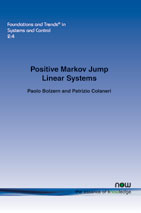Positive Markov Jump Linear Systems
By Paolo Bolzern, DEIB-Politecnico di Milano and IEIIT-CNR, Italy, paolo.bolzern@polimi.it | Patrizio Colaneri, DEIB-Politecnico di Milano and IEIIT-CNR, Italy, colaneri@elet.polimi.it
Abstract
This paper presents a comprehensive study of continuous-time Positive Markov Jump Linear Systems (PMJLS). A PMJLS can be seen as a dynamical system that switches within a finite set of linear time-invariant subsystems according to a stochastic switching signal modelled as a Markov chain, and describes the time-evolution of nonnegative variables under nonnegative inputs. Contrary to the well-studied general class of Markov Jump Linear Systems (MJLS), positivity endows the model with peculiar properties. The paper collects some existing results together with original developments on the stability analysis of PMJLS and the study of their input-output properties. In particular, conditions for stability of PMJLS are discussed, mainly based on Linear Programming problems. Similar computational tools are derived to analyze performance measures, such as L1, L2 and L∞ costs and the respective input-output induced gains. The second part of the paper is devoted to the class of Dual switching Positive Markov Jump Linear Systems (D-PMJLS), namely PMJLS affected by an additional switching variable which can be either an unknown disturbance or a control signal available to the designer for stabilization and performance optimization. We discuss several problems, including stability, performance analysis, stabilization via switching control, and optimization. Some application examples are introduced to motivate the interest in PMJLS and D-PMJLS.
Positive Markov Jump Linear Systems
Positive Markov Jump Linear Systems are piecewise positive linear systems affected by a stochastic signal generated by a Markov chain. Positive systems naturally arise in the description of biological systems, compartmental models, population dynamics, traffic modeling, chemical reactions, queue processes, and so on. A rich literature on positive linear systems is now available.
Positive Markov Jump Linear Systems is the first work to provide an overview of these developments. It outlines the typical applications of such systems, giving a detailed description of the mathematical theory underpinning the subject.
Positive Markov Jump Linear Systems provides a comprehensive and timely introduction to the study of such systems. Readers who are new to the topic will find everything required to understand such systems in a concise and accessible form.
